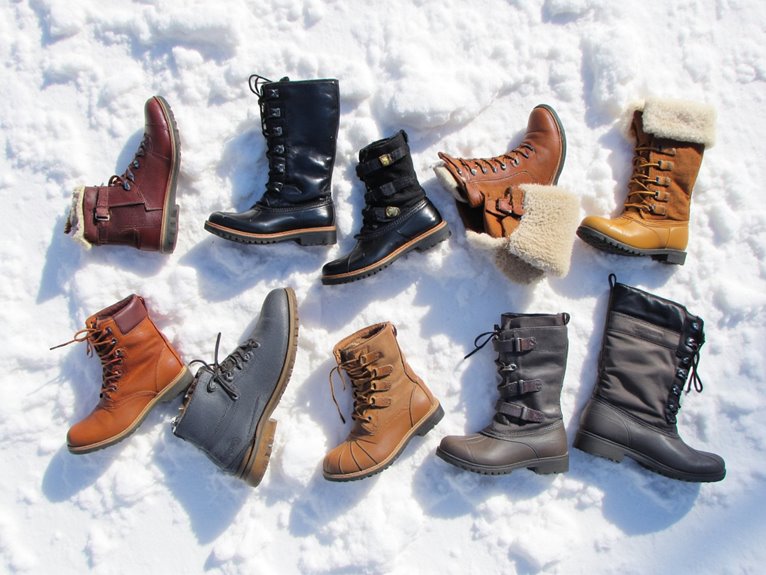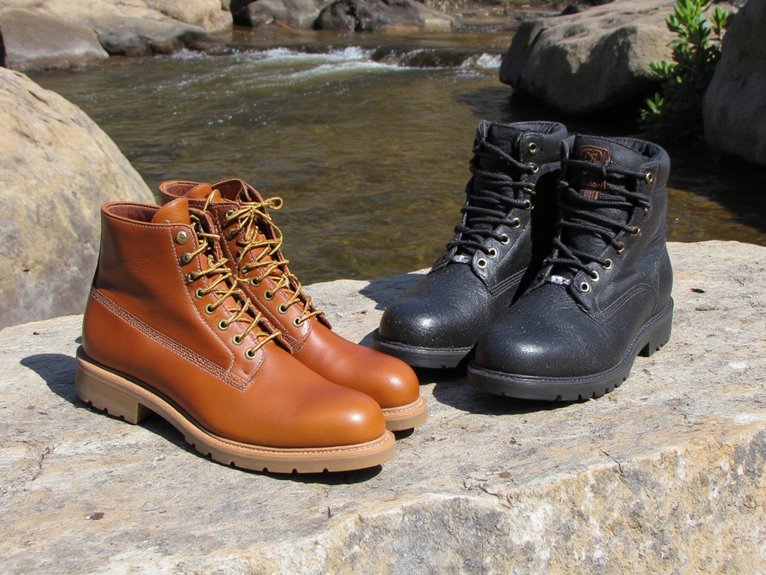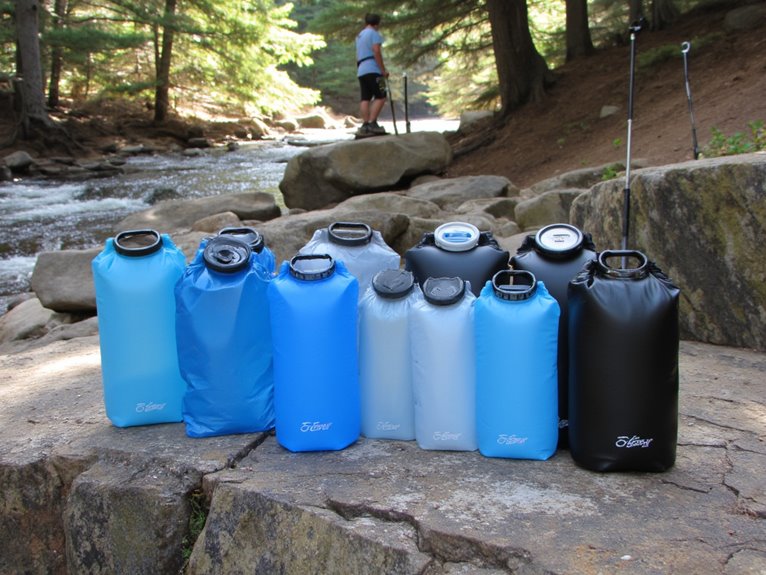Do Panniers Create Drag?
Panniers, attached to bicycles, create drag, which hinders cyclists' progress and increases energy expenditure. Aerodynamic principles dictate that the shape, size, and orientation of the rider and gear influence airflow, generating drag. Pannier design, material selection, and size all impact air resistance, with well-designed panniers reducing drag and wind noise. Wind tunnel testing reveals that panniers can increase drag by up to 25% compared to a bare bicycle. Understanding the science behind aerodynamics and pannier design is essential for optimizing cycling performance. The impact of panniers on drag is just the beginning – there's more to investigate in the world of cycling aerodynamics.
We are supported by our audience. When you purchase through links on our site, we may earn an affiliate commission, at no extra cost for you. Learn more. Last update on 28th December 2025 / Images from Amazon Product Advertising API.
The Science of Aerodynamics in Cycling
The principles of aerodynamics, which govern the interaction between air and solid objects, impact the speed and efficiency of a cyclist in motion.
In cycling, aerodynamics play a vital role in determining the energy expended by the rider.
As the cyclist moves through the air, their body and equipment create resistance, which slows them down.
The shape, size, and orientation of the rider and their gear influence the airflow, creating areas of high and low pressure.
This interaction between air and object generates drag, which hinders the cyclist's progress.
Understanding these principles is essential for optimizing cycling performance, as even small reductions in drag can yield significant gains in speed and efficiency.
Measuring Drag: The Numbers Game
Drag coefficients, a numerical representation of an object's aerodynamic properties, provide a standardized metric for comparing the aerodynamic efficiency of different components, from helmets to wheels, and even entire bicycles.
This numerical value, typically represented as CdA (drag coefficient multiplied by frontal area), is essential in measuring drag.
A lower CdA value indicates better aerodynamics, while a higher value suggests increased drag.
In the context of cycling, CdA is vital for evaluating the aerodynamic impact of various components, including panniers.
By analyzing CdA values, cyclists and manufacturers can make informed decisions about component selection and optimization.
This numerical approach enables a precise understanding of drag, allowing for evidence-based improvements in aerodynamic performance.
Pannier Design and Its Impact
In terms of pannier design, several key factors influence the creation of drag.
The aerodynamic shape of a pannier, for instance, plays a significant role in reducing air resistance, while material selection can also impact drag coefficients.
Additionally, the size and volume of a pannier can further exacerbate or mitigate drag, making informed design choices vital in minimizing this effect.
Aerodynamic Shape Matters
Most modern pannier designs prioritize aerodynamic shape, recognizing that a streamlined profile is essential to minimizing air resistance and maximizing cycling efficiency.
By reducing the pannier's cross-sectional area, designers can decrease air resistance substantially, allowing cyclists to maintain speed with less effort.
A well-designed pannier will have a tapered shape, with a narrow nose and a curved silhouette, allowing air to flow smoothly around the bag.
This not only reduces drag but also helps to reduce wind noise and buffeting.
Additionally, an aerodynamic shape can also improve stability, reducing the likelihood of the pannier shifting or wobbling during high-speed cycling.
Material Selection Counts
In addition to aerodynamic shape, the choice of material also plays a significant role in determining a pannier's overall aerodynamic performance.
The material used can affect the pannier's weight, flexibility, and surface roughness, all of which impact air resistance.
For instance, lightweight materials like nylon or polyester can reduce the pannier's overall weight, resulting in less air resistance.
Smooth, water-resistant materials can also reduce drag by minimizing turbulence.
In addition, some materials, such as Cordura or Kevlar, offer added durability and abrasion resistance, which can help maintain the pannier's aerodynamic shape over time.
Moreover, by selecting the right material, manufacturers can optimize their pannier designs to minimize drag and maximize efficiency.
Size and Volume Impact
Designers can substantially reduce aerodynamic drag by optimizing pannier size and volume, as larger panniers inherently create more air resistance due to their increased surface area and volume.
A smaller pannier will naturally produce less drag than a larger one, making size a critical consideration in pannier design. Additionally, the volume of the pannier also plays a significant role, as a pannier with a larger volume will displace more air, resulting in increased drag.
To minimize drag, designers should consider the following:
Optimize pannier size: Select a size that balances storage needs with aerodynamic efficiency.
Streamline pannier shape: A sleek, aerodynamic shape can reduce drag by minimizing air resistance.
Use a compact design: A compact pannier will naturally produce less drag than a larger one.
Consider a tapered design: A tapered pannier can help reduce drag by reducing air resistance.
Comparing Panniers to Other Bags
Panniers are often compared to other types of bags, such as backpacks, messenger bags, and saddlebags, but how do they stack up in terms of aerodynamics?
In general, panniers tend to be more aerodynamic than backpacks, which can create a significant amount of drag due to their bulky shape and position on the rider's back.
Messenger bags, with their slender shape and compact design, may be more aerodynamic than panniers, but their position on the rider's back or shoulder can still create some drag.
Saddlebags, being attached to the bike, tend to have a negligible impact on aerodynamics.
The Role of Rider Positioning
In the context of the role of rider positioning in minimizing drag, a rider's posture plays a significant role.
Maintaining an aerodynamic body position can greatly reduce air resistance, and even small adjustments can make a notable difference.
Rider Posture Matters
Maintaining an aerodynamic riding position can substantially reduce air resistance, as a rider's posture plays a crucial role in minimizing drag.
A rider's posture affects the flow of air around their body, and even slight adjustments can make a significant difference.
By adopting an aerodynamic riding position, cyclists can reduce the energy required to propel their bike, resulting in increased speed and endurance.
Key considerations for optimizing rider posture:
- Relaxed shoulders: Avoid tensing up, as this creates unnecessary drag.
- Streamlined torso: Maintain a slight lean forward to reduce air resistance.
- Low handlebars: Position your hands low to reduce wind resistance.
- Compact riding position: Keep your knees close to the handlebars to minimize drag.
Aerodynamic Body Position
A cyclist's body position on the bike is the single most critical factor in minimizing aerodynamic drag, as it can account for up to 70% of the total air resistance.
An aerodynamic body position reduces the frontal area exposed to the wind, resulting in reduced drag.
To achieve an ideal position, riders should adopt a low, narrow profile, with their torso flat, shoulders relaxed, and arms bent.
This allows air to flow smoothly around the body, reducing turbulence.
Additionally, riders should keep their knees close together and their legs in a streamlined position, further minimizing drag.
Wind Tunnel Testing and Results
In an effort to quantify the aerodynamic impact of panniers, researchers have employed wind tunnel testing to collect precise data on the subject. This controlled environment allows for accurate measurements of drag forces and aerodynamic coefficients. The results provide valuable insights into the effects of pannier design, size, and placement on aerodynamic drag.
Key findings from wind tunnel testing include:
- Drag increase: Panniers can increase drag by up to 25% compared to a bare bicycle.
- Size matters: Larger panniers create more drag than smaller ones.
- Positioning is vital: Panniers placed closer to the rear wheel create less drag than those positioned near the seatpost.
- Aerodynamic design: Streamlined pannier designs can reduce drag by up to 10%.
Real-World Implications for Cyclists
For cyclists, the aerodynamic impact of panniers can have significant implications for their riding experience, influencing factors such as speed, endurance, and overall efficiency.
In real-world scenarios, the added drag can result in increased energy expenditure, reduced speed, and decreased overall performance.
For commuting cyclists, this may mean arriving at work later than desired or requiring more frequent rest breaks.
Long-distance cyclists may experience increased fatigue and decreased overall distance covered.
Additionally, the added resistance can also impact the bike's handling and stability, affecting the cyclist's overall safety.
In addition, the aerodynamic implications of panniers can be particularly important for cyclists who prioritize speed and efficiency.




